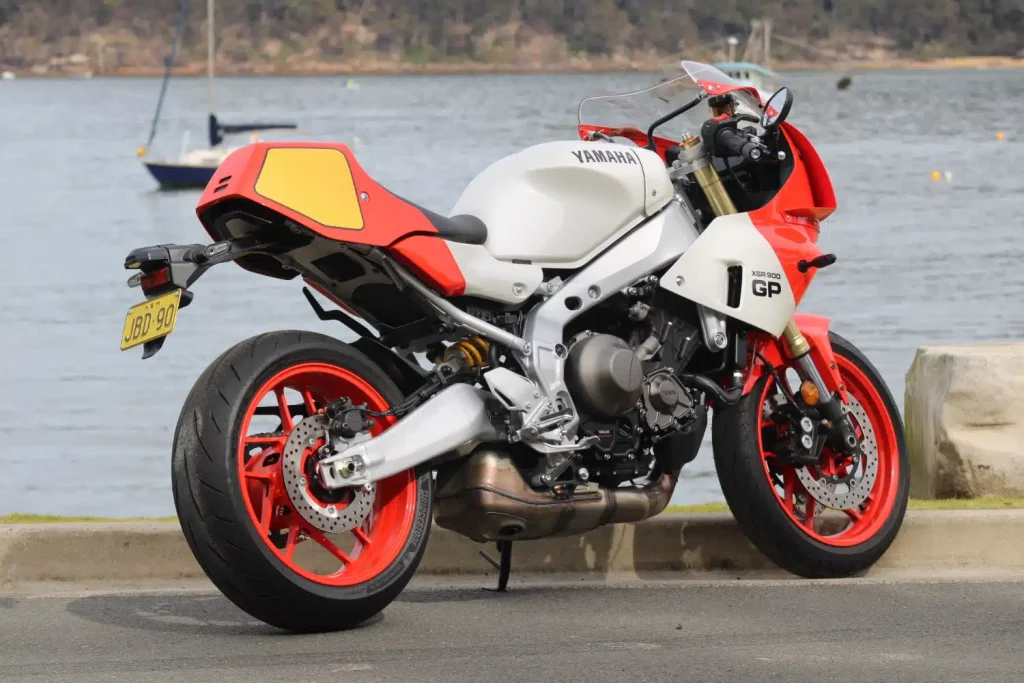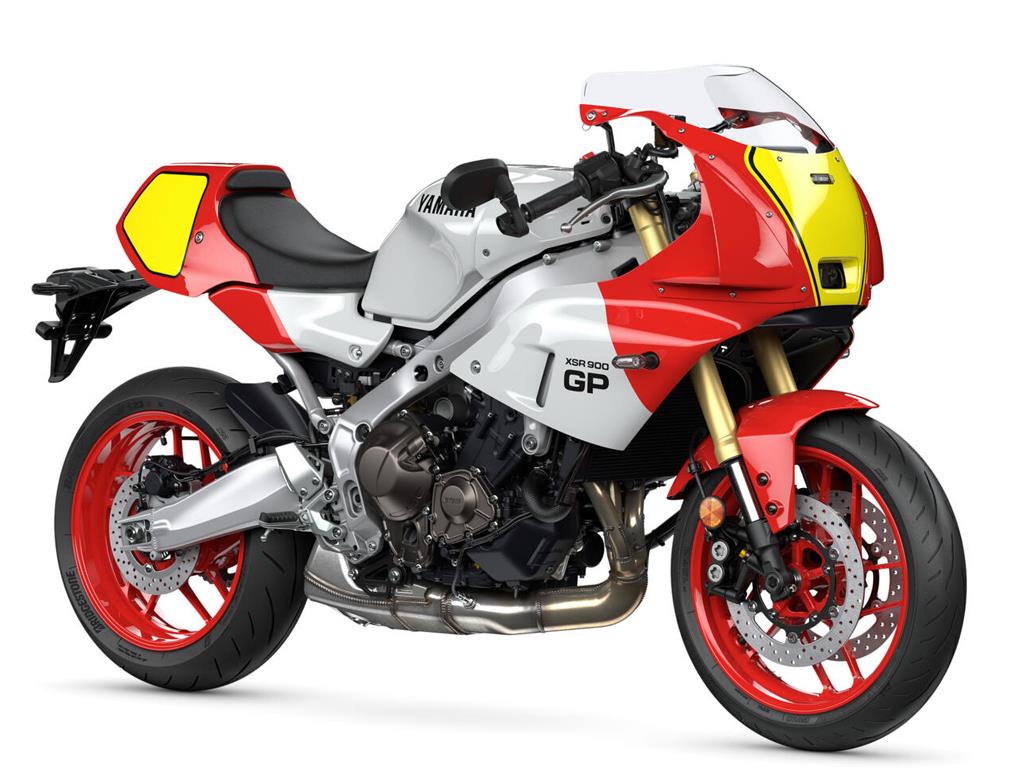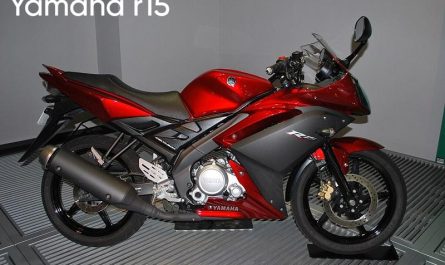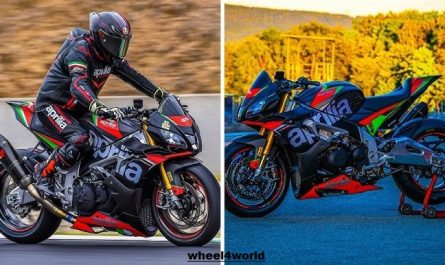Introduction
The Yamaha XSR 900 has gained considerable attention in the motorcycle community, especially with the addition of the Velocity Moto RD500 body kit. This unique modification transforms the XSR into a stunning homage to the legendary RD500, a bike that many enthusiasts dream of owning.In this review, I go further to describe more about its major features, how it fares thereafter, and the feeling you get while using it when you are riding so that you get as much information as you can regarding this bike.

Overview of the Yamaha XSR 900
The Yamaha XSR 900 is one of the latest successful attempts of the company to design a modern retro motorcycle. It is equipped with a CP3 engine which delivers low-end torque and a powerful performance sensation. The XSR 900 falls into Yamaha’s lineup, it is the product that attracts customers who care about style and power.
Comfortable Ride
As for riding situations, it is comfortable even on a sport bike, if the trip is long, not just a usual day tour. The XSR900 GP is ergonomically set and this might feel a bit straining at first for some riders as it is designed to take the rider out of the wind while giving him or her the feel of the motorcycle.
- Rider Position: Although you lean forward a bit, this position helps reduce wind resistance.
- Handling and Control: Riders will appreciate the bike’s responsive handling. It grips well during cornering, making it a joy to ride on winding roads.
Design and Aesthetics
Perhaps the most obvious thing to mention about an XSR 900 equipped with a Velocity Moto kit is its vintage looks. The coloring is most businesslike – red with contrasting accents in white and black; the striking stripey pattern at the engine must recall the spirit of Yamaha racing bikes.
The body kit chosen not only improves the aesthetics of a bike but also preserves the accents of the RD500’s lines. The tank position is more conventional than that of MT-09, where the rider’s legs can easily sit and have an easier time managing the bike when riding. The material choice of fiberglass provides the bike with a certain feel and texture not observed in bikes with ABS plastic detailing.
Comparison with MT-09 SP
While the XSR 900 shares many components with the MT-09 SP, there are notable differences that affect the riding experience. The XSR features a longer swinging arm, which shifts the weight distribution and offers a more stable ride. However, this stability comes at the cost of some of the agility and excitement found in the MT-09.
- Engine: Both bikes use the same CP3 engine, delivering 117 horsepower and strong low-end torque.
- Suspension: The XSR’s suspension is softer and more forgiving compared to the sharper, sportier setup of the MT-09 SP.
- Riding Position: The XSR’s riding position is slightly more relaxed, making it suitable for longer rides.
Advanced Technology and Electronics
The XSR900 GP is equipped with Yamaha’s latest tech package, which includes three preset riding modes: Rain, Street, and Sport. Also, there is an additional custom mode where individuals can set personal preferences. A six-axis inertial size unit, which regulates ride characteristics like traction, abs, and wheelie, provides the foundation for this adaptability.
The bike also benefits from a new, more improved 5-inch color TFT screen which is much better than the previous models. This is not only legible but also combines the icons that were used in the past and are now combined with modern technologies.

Suspension and Handling
Additionally, the chassis of the XSR900 GP has been stretched slightly to improve its stability throughout handling. The suspension system comprises an inverted KS-YM KYB fork on the front and an end-on KS-YM KYB shock at the back. Such an arrangement permits the rider to have a comfortable but sporty ride – especially if one is crawling through city traffic during the week and then goes on a sports bike RPF on the weekend or whenever the roads get a little twisty.
Further, there has been more flexibility, mainly because the nature of the bike’s suspension has been made more versatile to accommodate all types of riders. This is where consumers get that perfect fitting for the road or track immediately after they set foot in a store.
Pros and Cons
As with any motorcycle, the XSR 900 with the Velocity Moto body kit has its advantages and disadvantages. Here’s a breakdown:
Pros
- Stunning retro design that pays homage to the RD500.
- Stable handling thanks to the longer swinging arm.
- Comfortable riding position for longer journeys.
- Advanced electronics enhance the riding experience.
Cons
- Less playful than the MT-09, which may disappoint some riders.
- The suspension feels a bit bouncy at high speeds.
- The brakes could use improvement for a sportier feel.
Comfort and Ergonomics
The XSR900 GP is initially built to have a sporty riding position but it is not bad for long rides. Clip-on handlebars extend above the top yolk to avoid unwarranted aggressive angles. Nonetheless, one must remember that this model is less rearward inclined than its opponents – XSR900 or MT-09. Some riders have said that it is not as good for touring or those long-distance ones as bicycles with a more upright riding posture. In any case, across short distances and lively sprints, it sits well between comfort and performance.
Price and Value
The XSR900 GP is priced competitively at around £12,500. While this is a step up from the MT-09, which offers excellent value at approximately £10,000, the extra cost for the GP model is justified by its unique aesthetics and enhanced features. Compared to similar class models like Triumph Speed Twin 1200, and Kawasaki Z900 RS, the XSR900 GP model provides an exclusive touch of traditional design with performance elements.
Potential Drawbacks
Like with any motor, the XSR900 GP has its flaws and they are as follows: The major issue is its level of comfort for long-distance rides. Although it is comfortable when used for shorter distances, the riding posture is slightly discreet and hence not so comfortable when used for longer distances. Those who wish to cover regular commutes or touring purposes may ultimately go for an ordinary naked bike namely an XSR900 or Tracer 9 equipped for touring more.
Who Is This Bike For?
The Yamaha XSR 900 with the Velocity Moto RD500 body kit fits the bike aesthetic with a bonus of today’s motorcycle performance. They want a bicycle that is stylish but also fully functional for average life utilizations. This model is ideal for enthusiasts who want to ride a bike that was used during two-stroke racing but do not want the rigmarole of having to deal with BP maintenance.
Conclusion
The Yamaha XSR900 GP is a classic-styled motorcycle with some modern air to it. It differentiates itself in a rather saturated market by providing something that other trikes lack: the ability to deliver a distinctly retro and modern ride at once. Long-distance comfort may not be its strong suit but in as much as performance design and technological integration it’s impressive.
Vintage Racing Look and modern performance are two big attributes that make the XSR900 GP a bike that deserves to be on your list if you are going for a sports bike. In the daily drive through busy city traffic or during a race through winding country roads, it is hard to look for anything more satisfying.
FAQs
How much is a Yamaha XSR900 GP?
The price of the Yamaha XSR900 GP varies depending on location and specific model year. However, you can expect it to be priced in the range of $10,000 to $12,000 USD.
Is the XSR900 fast?
Yes, the XSR900 is a fast motorcycle. It is powered by a 898cc triple-cylinder engine that produces 117 horsepower and 62.4 lb-ft of torque. This engine gives the XSR900 a top speed of around 140 mph.
What is the BHP of the XSR 900 GP?
The BHP of the XSR 900 GP is 117 horsepower.
How much horsepower does the XSR900 GP have?
The XSR900 GP has 117 horsepower.
What CC is a Yamaha XSR900?
The Yamaha XSR900 has a displacement of 898cc.
What kind of bike is Yamaha XSR?
The Yamaha XSR is a sport heritage motorcycle. It combines the styling of classic motorcycles with the performance and technology of modern bikes. Sources and related content


